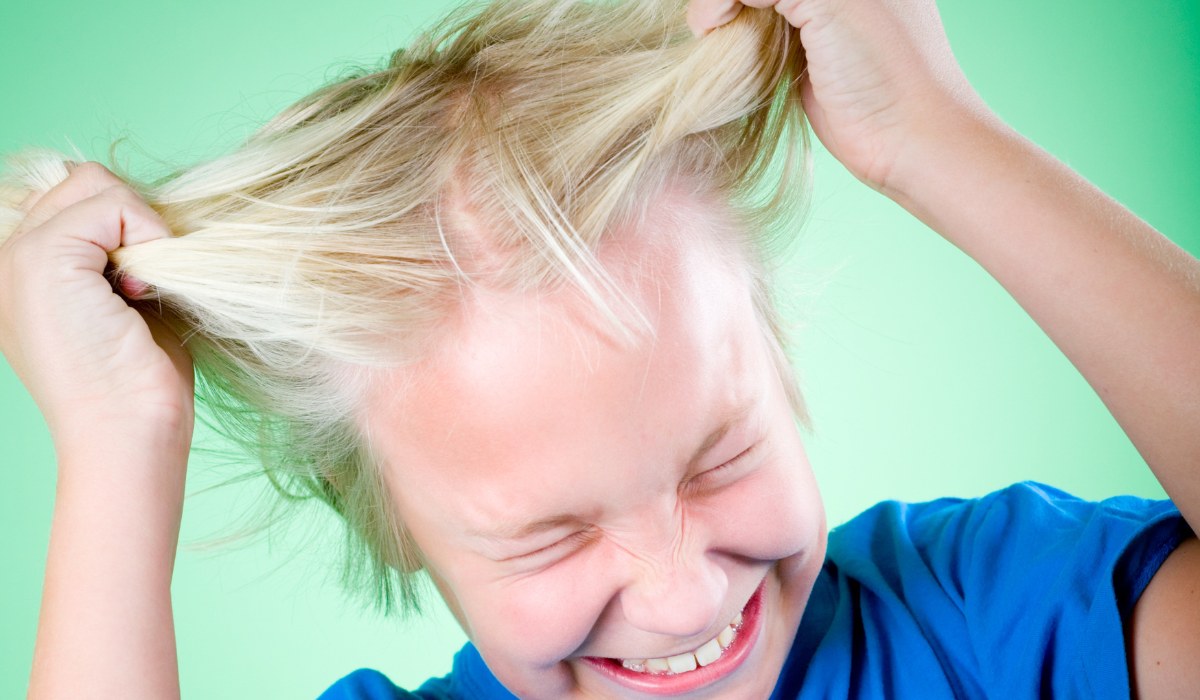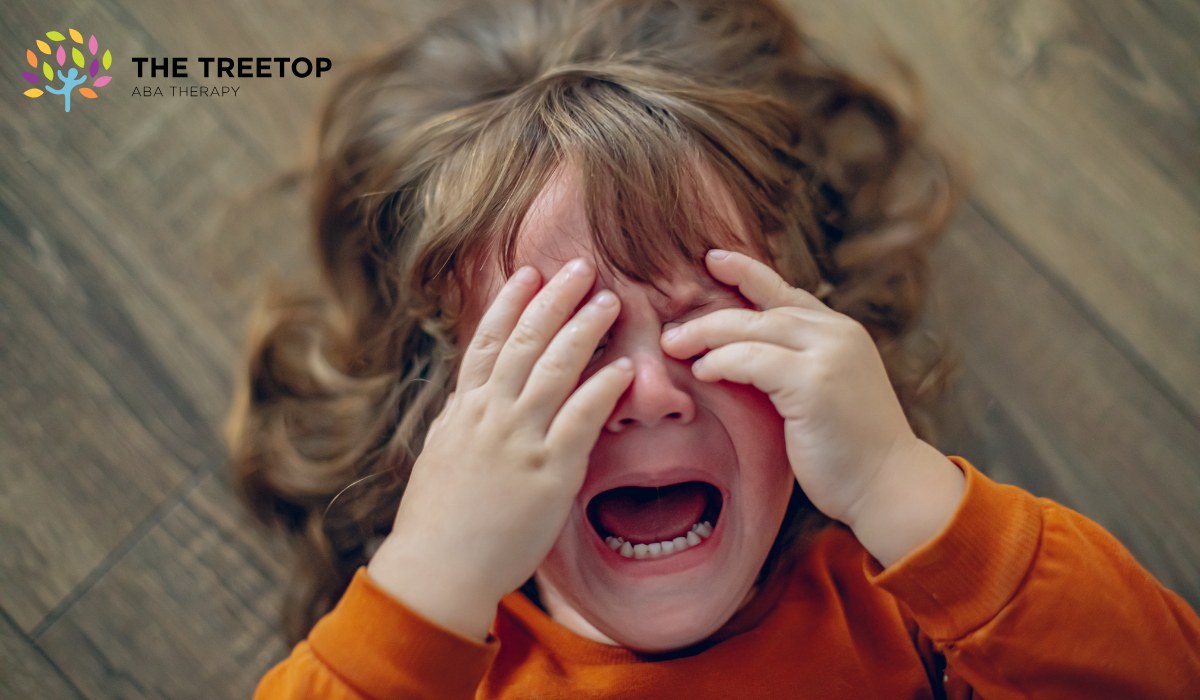Autism & Hair Pulling: When to Worry and Seek Help

Written By:
Fact-checked By:
October 14, 2025
Autism and hair pulling may be more than a habit. Understand what drives this behavior, when to worry, and what support options are available.

Key Points:
- Hair pulling in autism may be a sensory regulation behavior or linked to anxiety.
- Parents should monitor frequency, intensity, and emotional triggers to know when to seek help.
- ABA therapy and other interventions provide structured support to reduce harmful hair-pulling habits.
Hair pulling can be distressing for parents to witness. In children with autism, it’s not always easy to tell whether it’s a harmless habit, a self-soothing ritual, or a sign of deeper struggles. While occasional pulling may be linked to sensory needs or curiosity, consistent or intense patterns may require professional guidance. Understanding why this behavior happens—and when to worry—can help you support your child with compassion and the right interventions.
Why Do Children with Autism Pull Their Hair?
Hair pulling, known clinically as trichotillomania when repetitive and compulsive, can have several causes in autistic children. Unlike a simple fidget or habit, this behavior often connects to deeper needs. Recognizing the possible drivers is the first step toward addressing it.
Some children pull hair for sensory input—either the texture of hair between fingers or the feeling of release when hair is pulled. Others may use hair pulling as an emotional outlet during moments of stress, boredom, or overstimulation. For some, it becomes part of a ritual that’s hard to interrupt.
Understanding the “why” behind the pulling helps parents decide whether to monitor, redirect, or seek professional support.
When Hair Pulling Becomes a Concern
Parents often wonder: Is this just a phase or something more serious? While mild hair pulling may come and go, there are specific warning signs that suggest it’s time to seek help.

Key Red Flags to Watch For
If you notice any of the following, it’s worth discussing with a professional:
- Visible bald spots or skin injury: Consistent pulling can cause hair loss, bleeding, or skin infections. When the behavior leads to physical harm, intervention is necessary.
- Escalation during stress: If pulling intensifies whenever your child is anxious, frustrated, or overstimulated, it could be a maladaptive coping strategy rather than just a habit.
- Interference with daily life: Children may struggle to focus at school, avoid social settings, or become distressed when parents try to interrupt the behavior.
- Inability to self-regulate: If your child cannot stop pulling even when prompted or redirected, it may have crossed into compulsive territory.
- Accompanying emotional distress: Crying, anger, or withdrawal tied to pulling episodes can indicate that the behavior is tied to bigger emotional challenges.
The earlier parents address these warning signs, the easier it is to redirect the behavior into healthier outlets.
Common Triggers Behind Hair Pulling in Autism
Hair pulling rarely happens without reason. By observing patterns, parents can often connect the behavior to specific triggers. While every child is unique, these are common drivers:
- Sensory Seeking or Avoidance: Some children crave the tactile feedback of pulling hair, while others do it to release tension in overstimulating environments.
- Emotional Regulation Difficulties: When emotions become overwhelming, hair pulling may serve as a coping strategy. For many autistic children, it’s a way to manage big feelings when words don’t come easily.
- Anxiety and Compulsions: Repetitive behaviors, including hair pulling, can be part of obsessive-compulsive tendencies sometimes seen in autism.
- Boredom or Inactivity: Downtime or lack of stimulation can invite self-directed behaviors like hair pulling.
- Transition Stress: Shifts in routine, such as moving from one activity to another, can be a major trigger for self-soothing habits like pulling.
By identifying which of these triggers your child experiences, you gain a roadmap for prevention strategies.
Strategies Parents Can Try at Home
Parents often want to know what they can realistically do before involving professionals. While severe or harmful hair pulling requires clinical support, there are steps you can try at home to redirect the behavior.
Practical approaches to consider:
Offer Alternative Sensory Input
Provide fidget toys, textured fabrics, or playdough to satisfy tactile needs without harm. Some children respond well to chewy necklaces or stress balls.
Track Patterns in a Journal
Record when, where, and why pulling happens. Over time, you may see clear patterns tied to certain times of day, transitions, or emotions.
Build Predictable Routines
Consistency helps reduce anxiety. Structured schedules may lower the urge to self-soothe through pulling.
Model Calming Techniques
Practice deep breathing, squeezing hands, or stretching together during moments of tension. Your child may adopt these tools with repetition.
Create Redirection Plans
When pulling begins, calmly redirect to an alternative activity rather than scolding. This reduces shame and builds trust.
Home strategies don’t replace professional care if the behavior persists, but they provide a compassionate foundation.

When to Seek Professional Support
If hair pulling becomes frequent, harmful, or emotionally tied, it’s time to involve professionals. Therapists can help parents determine whether the behavior is part of trichotillomania, a sensory need, or an emotional regulation challenge.
Applied Behavior Analysis (ABA) therapy is especially effective in these cases. ABA professionals analyze the triggers and functions of behavior, then design personalized strategies to replace hair pulling with healthier alternatives. Parents also learn practical tools they can use at home for consistency.
In addition, some children may benefit from occupational therapy, especially when sensory processing difficulties are at play. For children with significant anxiety, collaboration with medical providers may also be part of the plan.
How ABA Therapy Helps Address Hair Pulling
ABA therapy focuses on breaking down behaviors into understandable pieces—what causes them, what maintains them, and how to replace them. For hair pulling, ABA can:
- Identify the exact triggers that spark pulling episodes.
- Teach children replacement behaviors that meet the same need (such as stress balls instead of hair).
- Reinforce positive alternatives through rewards and praise.
- Support parents in building consistency at home, school, and community settings.
With this structured approach, children can find healthier outlets for their needs while parents feel empowered with clear strategies.
Final Thoughts and Next Steps
Hair pulling in children with autism can be confusing for parents—sometimes it’s just a fleeting behavior, other times it signals a bigger challenge. By paying attention to patterns, addressing triggers, and knowing when to ask for help, families can navigate this with clarity and compassion.
Professional support like ABA therapy can make a significant difference in reducing harmful habits and building new skills. If you’re seeing persistent hair pulling that causes distress or injury, it may be time to explore therapy options.
At Treetop ABA Therapy, we provide compassionate and personalized ABA therapy to help children build healthier coping strategies and thrive in their daily lives. If your child is struggling with hair pulling or other behaviors, we’re here to guide you every step of the way.
Reach out today to learn more about ABA therapy in New Mexico, Arizona, Colorado, Georgia, and Oklahoma and take the first step toward meaningful support for your child.
Similar articles
Reaching New Heights With The TreeTop ABA Therapy
Our mission is to help improve the lives of children with ASD and their families with home and community based ABA therapy.

